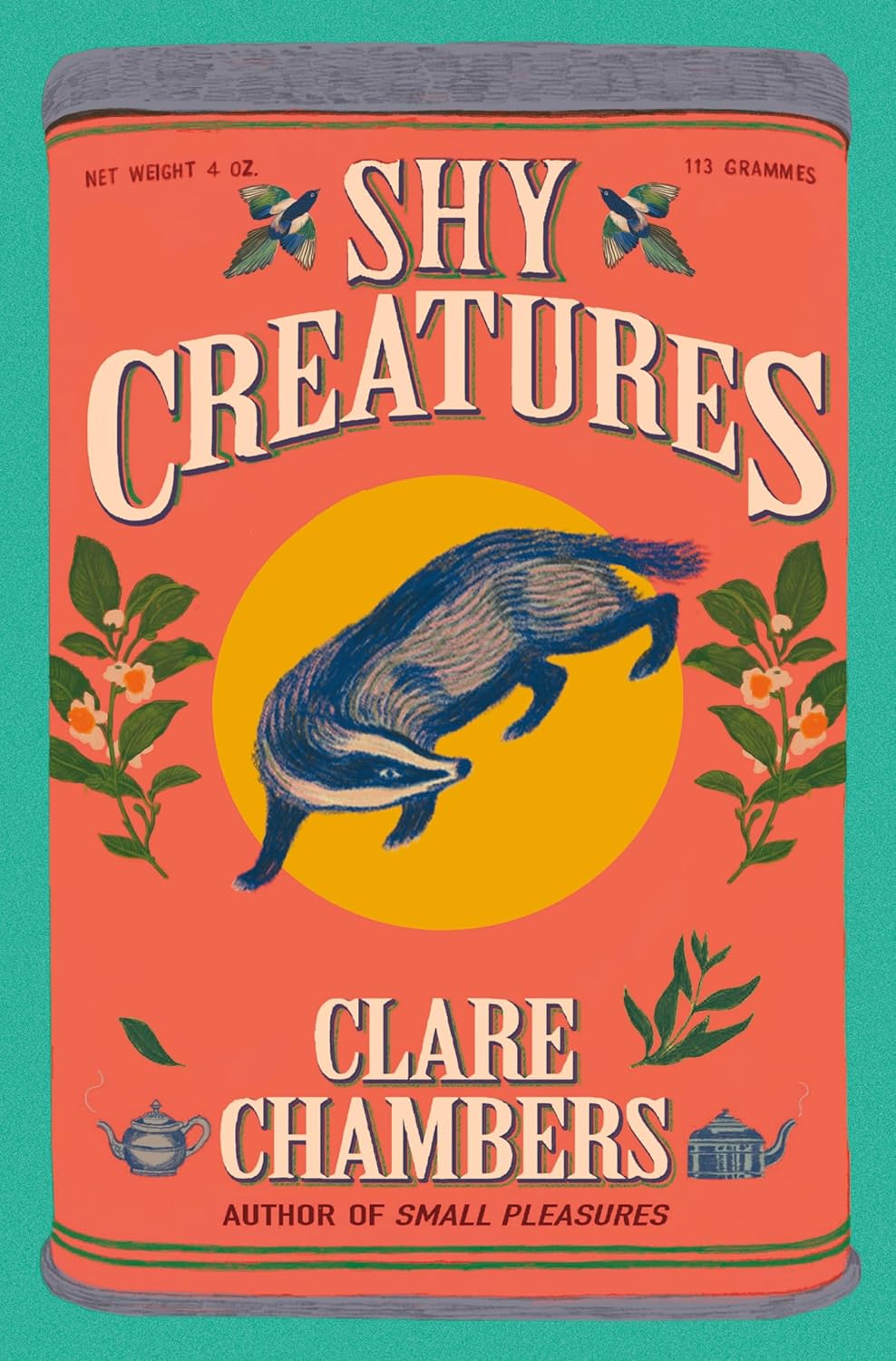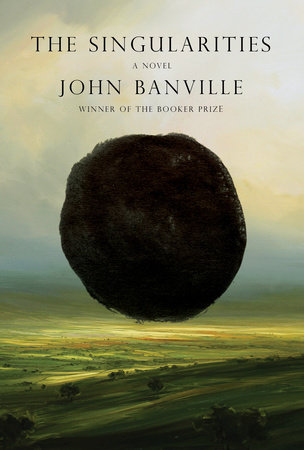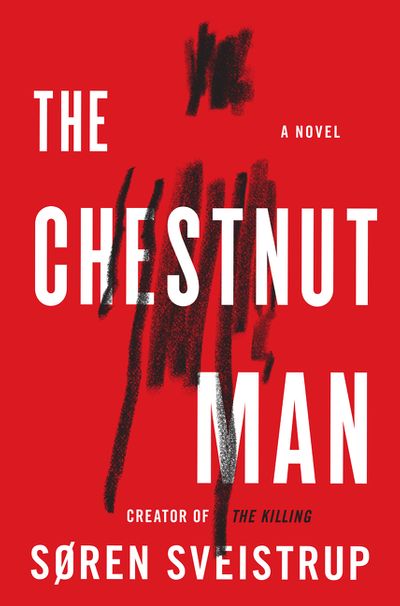Shy Creatures: A Novel
- By Clare Chambers
- Mariner Books
- 400 pp.
- Reviewed by Ellen Prentiss Campbell
- November 12, 2024
This quietly incisive tale echoes the late Barbara Pym.

Reading Shy Creatures by Clare Chambers, I was tempted to suspend reading-to-review, lay aside my pencil, and just settle into a well-told story. Although this is Chambers’ ninth novel, it’s only her second published in the United States (after Small Pleasures, longlisted for the 2020 Women’s Prize for Fiction). A stranger to her previous work, I felt discovering Chambers was almost like having a lost friend, the late author Barbara Pym, return.
No, it was more like meeting her niece.
Chambers’ work is neither imitative nor derivative, but her voice is reminiscent of Pym’s — the assonance of family telephone voices. The authors’ mutual territory is mid-20th-century Britain (London for Pym, Bristol for Chambers). And if Chambers might be Pym’s niece, Shy Creatures’ protagonist, Helen, could be related to one of Pym’s “excellent women.” She’s intelligent, well educated, middle class, and middle-aged. Dedicated to an interesting job, dutiful to family. Single, attracted to an unsuitable, unavailable man.
Pym wrote of the time in which she lived. Chambers occupies a historical novelist’s vantage point, looking back on the mid-20th century with a bifocal perspective of immediacy and retrospect. Her research, seamless and invisible, supports Shy Creatures with authentic details of daily life — manners, dress, activities, food, furniture — against a backdrop of current events and recent history.
Both Chambers and Pym are close chroniclers of the domestic and professional world, as well as of the private yearnings of their characters. Both have been compared to Jane Austen (Pym deemed the accolade “blasphemous”). But the two are distinguished by different narrative choices, likely informed by sensibility and preference as much or more than writing 50 years apart. In life, in families, in literature, and among authors, there are generational, personal, and experiential differences. Customs and assumptions, frames of reference, and matters of style change over time.
Pym’s drama is subtle, plot secondary to character, the events small-scale though of seismic importance. The tone is gentle, the observations shrewd and ironic as she explores the illusions and disillusionments, disappointments and victories, of her at least superficially decorous women. The door to the bedroom is never open — a commercial challenge even in 1939, when, according to Pym’s A Very Private Eye: An Autobiography in Diaries and Letters, her agent advised being “more wicked, if necessary.”
Pym persevered and published six novels with the publisher Cape from 1950 until 1961. Then it dropped her, and she endured 16 years of rejection. Writing her friend Philip Larkin in 1974, Pym (as rueful and gently sarcastic as one of her characters) said, “Perhaps the only hope of getting published is a romantic or gothic novel.” But she couldn’t — or wouldn’t — write one. Vindication arrived in 1977 with Macmillan’s publication of Quartet in Autumn and her nomination for the Booker Prize. Cape re-issued her backlist; Macmillan published her three final novels.
By contrast, Shy Creatures, though also character-driven, has an intricate, essential plot: a psychological mystery. Chambers, in an afterword, attributes her initial inspiration to a 1952 news story in which police discovered “a naked man with a five-foot beard…living as a recluse in conditions of some squalor with his elderly aunt.” The author chose to “transplant” this event to 1964, “an interesting moment in the history of psychiatry (and of society itself).”
Helen is an art therapist at the hospital where the recluse, William, is admitted. Mute and shy, he is revealed to be a talented artist. Helen earns his trust and uncovers secrets behind William’s situation, symptoms, and condition. Her work proves more effective than William’s treatment by the (married) psychiatrist with whom she is having an affair.
Sex — love and lust; intimacy, with its attendant complications, pleasures, and perils — is experienced by the characters with a period-correct soft focus. The bedroom door is ajar if not wide open. Nothing gothic, no bodice-ripping here, but exploitation and banal wickedness are at play. There are moral choices to be made, as one character says, “between the easy thing you’d rather do and the difficult thing you ought to do.”
Finally, what wins and rewards is doing the hard good thing. Thinks Helen:
“The strangest thing is that as soon as I’d committed myself to doing the difficult thing, a huge weight fell away and I felt completely at peace for the first time in months.”
After finishing Shy Creatures, and wanting to read more of Chambers’ work, I sought out Small Pleasures. Here again are echoes of Pym’s voice, milieu, and concerns, alongside Chambers’ particular interest in psychological mystery. Another excellent, dutiful woman (a journalist with her own backstory) investigates a claim of virgin birth. Shy Creatures is the stronger book, but Small Pleasures is very satisfying.
Clare Chambers is an author to read, enjoy, and watch out for. Let’s hope her future and prior work becomes readily available on this side of the Atlantic. A worthy descendant of Barbara Pym, with her own intentions and style, Chambers is crafting straightforward narrative that’s old-fashioned in the best, fad-defying way. Sometimes, it’s daring to be quiet.
Ellen Prentiss Campbell’s collection of love stories is Known By Heart. Her story collection Contents Under Pressure was nominated for the National Book Award, and her debut novel, The Bowl with Gold Seams, won the Indy Excellence Award for Historical Fiction. Her novel Frieda’s Song was a finalist for the Next Generation Indie Book Award, Historical Fiction. Her column, “Girl Writing,” appears in the Independent bi-monthly. For many years, Campbell practiced psychotherapy. She lives in Washington, DC, and is at work on another novel.

